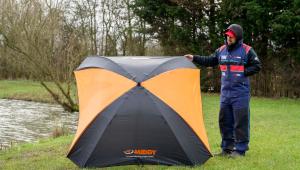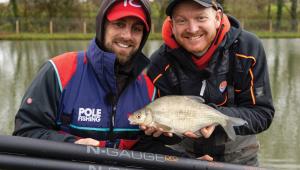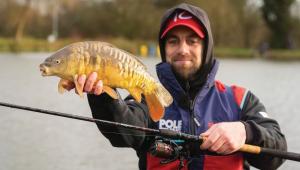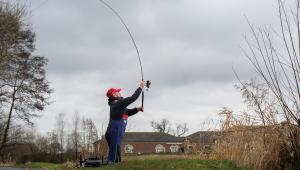Slide Into Deep Water!
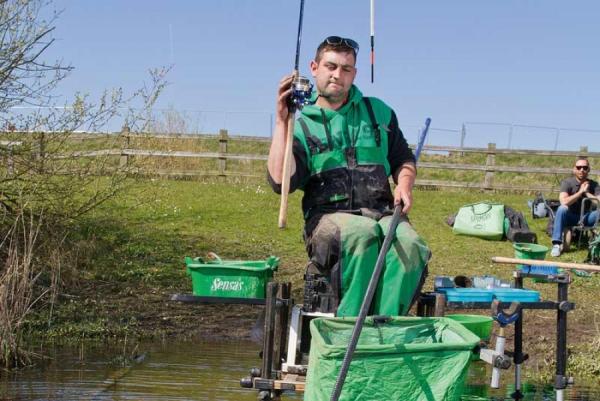
England ace Matt Derry explains the setup and feed required for a session on the slider float.
Words and photos: Steve Martin
It’s pretty much nailed on that when it comes to fishing matches on large, deep-water lakes, most anglers will make a grab for their feeder rods. The types of venues that come into this category would be gravel pits and natural lakes, where many of them are controlled by angling clubs and are not seen as commercials.
The fish stocks in the lakes would also vary differently, as the main quarry would mostly be roach, perch, skimmers, bigger bream and possibly tench. Any carp that lurked in the depths would more than likely be big, old fish so again, unlike a commercial, it’s the one species that’s rarely going to be caught when there are 20-plus anglers on the water.
You will certainly catch on the feeder on the venues, but often the bites are at a premium, and yes, when a fish takes the bait, it’s likely to be a good size. However, the wait for one big fish, say a bream, means that you could have missed out on catching a similar weight to that fish, or even better, in the same time, if you had targeted the smaller species instead.
You could also catch those fish on the feeder, but it’s not the most sensitive of methods, and often you will miss bites altogether and end up with a ragged hook bait, which decreases the chance of catching.
That’s where fishing the slider comes into play. It’s not a popular tactic and it’s often given a wide berth, by club anglers especially. However, with a little practice, and patience, it’s an exciting way to catch fish, as you are not sitting twiddling your thumbs, waiting for a bite, as you are with a feeder.
Kamasan Startlets’ Matt Derry loves fishing the slider. It’s a method that he’s had to perfect in recent years, as he is a member of the Drennan Team England squad for the European Championship in July, and as it’s float only it’s the tactic needed when fishing beyond the pole line. We joined Matt at Kingswood Lake near Cannock, which is controlled by Blackfords Progressive Angling Society, where the water is 19 feet in places, making it the ideal venue to demonstrate the art of slider fishing.
A quick look at Matt’s gear revealed he would be fishing with a 13ft rod and a reel loaded with 0.22mm Daiwa ST line. He explained that the line needs to be a higher diameter as it has to take the punishment of casting 15g plus. It clear to see why, as the floats that Matt uses are nothing like your traditional waggler, or pellet waggler, even.
The float he selected had a bulbous, loaded base – rated at 3g + 12g, a very slim stem and a slightly wider bristle. The 3g was the actual loading of the float, and the + 12g was the additional weight needed to correctly cock it. The profile of the float was designed to give it great stability in the water, but at the same time be incredibly sensitive when a fish takes the bait.
To set the rig up, Matt first pinched a No4 around three feet up the line. He then threaded on a microbead followed by the float, which had its eye slightly crushed. He had done this to ensure that the float is stopped by the bead, as often the big eye can slip over the stop.

Crush the eye at the base of the waggler to ensure it doesn't slip over the bead.

The micro swivel and No4 shot act as the 'dropper' above the hook link.
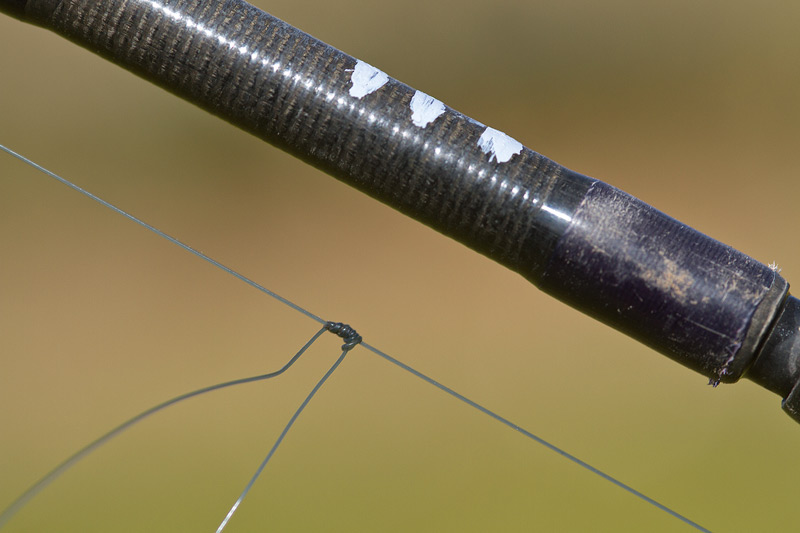
Mark the depth of the stop knot on the rod, the same as you would on your top kit.
Next, he threaded on a 10g Drennan inline olivette and then tied on a micro swivel, before he pinched on three AAA shot above this, which he explained would be just about the right loading, but it might need a little tweaking. A quick cast out into the deeper water confirmed the weight was okay, with the bristle sitting half an inch out of the water.
So just how do you go about plumbing up a slider? Matt pointed out that it was actually quite simple. First, he tied a stop knot onto the line, above the bead, using a length of his reel line. He commented that it’s important to use the same line, as a different mono could easily slip or, worse still, damage it, and to make sure you leave tags of about three inches so that the knot goes through the rod’s eyes smoothly.
He then removed the No4 shot above the bead and placed it above the other shot, then carefully pushed the stop knot up the reel line to what he believed to be about the right depth. As a plummet, he added an SSG above the other shot.
Having picked out a far-bank marker, Matt then spent a short time casting and adjusting the position of the stop knot until the float settled at the correct depth. He explained that when casting a slider, once the bulk hit the deck he would wind back four or five turns, and then open the reel’s bail arm and allow line to spool off until the float broke the surface, with just some of the bristle showing. Once he was happy with the depth, Matt then held the bulk against the reel’s bail arm and marked where the stop knot was by making a mark on his rod. He would then use this mark when adjusting the depth, so he could gauge how far overdepth he was fishing.
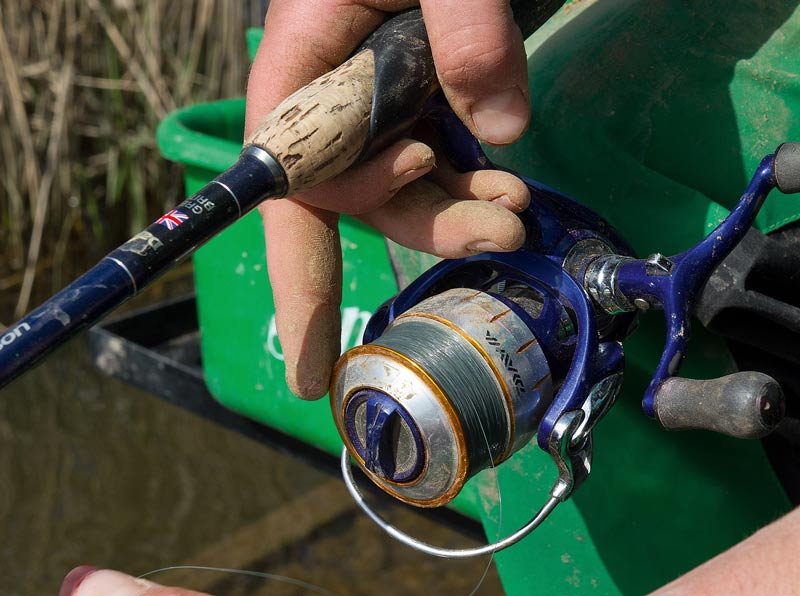
Allow line to spool off the reel, so that the float resurfaces directly above the feed.
He then removed the extra SGG and slid the olivette and 3AAA up the line – leaving the No4 shot (the dropper) above the swivel. Where the main bulk was set was important, so as to avoid tangles on the cast. Matt did this by next attaching his 12in hook link – a size 18 Kamasan B911 F1, tied to 0.12mm mono – to the swivel, and then holding it parallel against the reel line above the swivel, he moved the bulk up the line, so that when the float hung down, there was a 2in gap between the bristle and hook.
With the rig now sorted, Matt explained how to fish with it. Once you’ve cast out, you need to sink the line and wind back a few turns. Then, as when plumbing up, you open the bail arm to allow the float to slide up to the surface. When the float rises, most of the stem will become visible and then, as the dropper settles it will sink until only the bristle is sticking up. Bites will then be either the tip being pulled under or a lift bite. Which indication will be governed by how much overdepth the rig is being fished. A few inches and the tip will disappear. Eight inches or more and the float is more likely to lift, as the dropper comes more into play.
Feeding, when fishing the slider, is not dissimilar to loose feeding, but instead of firing out a few maggots and casters, it’s small nuggets of groundbait instead. Matt’s recipe for the session was 25 per cent each of Sensas Canal Black and Gros Gardons, plus 50 percent of Terre de Somme. This created a heavy mix, which he had overwetted to make it bind better and sink quickly. The natural leam also created an attractive cloud in the water. A few casters and dead red maggots were also added to keep the fish-focused when they moved in on the feed. Matt added that he would feed six to eight nuggets at the start of the session, and then feed after every cast.
The water at 30 or so yards out, where Matt had plumbed up, was around 15 feet deep, and there was a tinge of colour, so bearing in mind the bright, clear conditions it was an ideal depth to tempt a few silvers, and hopefully some of the venue’s bigger bream.
There was a little breeze on the water too, which wouldn’t affect the tow too much, but if the wind got up and the water started to pull Matt would fish as much as a hooklength overdepth, with the dropper resting on the bottom.
The session was kicked off with eight nuggets of feed, and he made his first cast with double pinkies on the hook, and the rig set to fish two inches overdepth. He quickly started to get indications, and after two occurrences of trashed hook baits, he picked up a small roach. More small silvers followed, and no matter what the size, Matt fed after every cast, as this would slowly build the feed in the swim. In theory, a small nugget of feed hitting the water made the same noise, as if it had been a feeder, and it’s known that fish will investigate noise, so it has the same effect.
Matt caught a small hybrid and skimmer, as well as the small roach, but the action was a little slow. He had also missed a few lift bites, which he concluded was due to the fish feeling the dropper before taking the bait confidently. To counter this, he played around with the amount of line on the deck, until the bites became more positive.
The next hour also saw him play around with hook baits – double pinkies, double red maggots, double dead reds and a pinkie/maggots cocktail – which resulted in some bigger silvers and a small perch. Double pinkie seemed to bring the best response. To try and get the bream interested, he added some chopped worms to his feed. The move worked, as after half-a-dozen more roach, he netted a bigger skimmer and a decent perch.
The conditions had changed too. The wind had almost dropped and the water looked like a sheet of glass. Not ideal, but at least it was a little easier to see the float, as while the breeze was on the water, the changes in light made it difficult for Matt to see, due to the glare. Thank goodness for polarised glasses!
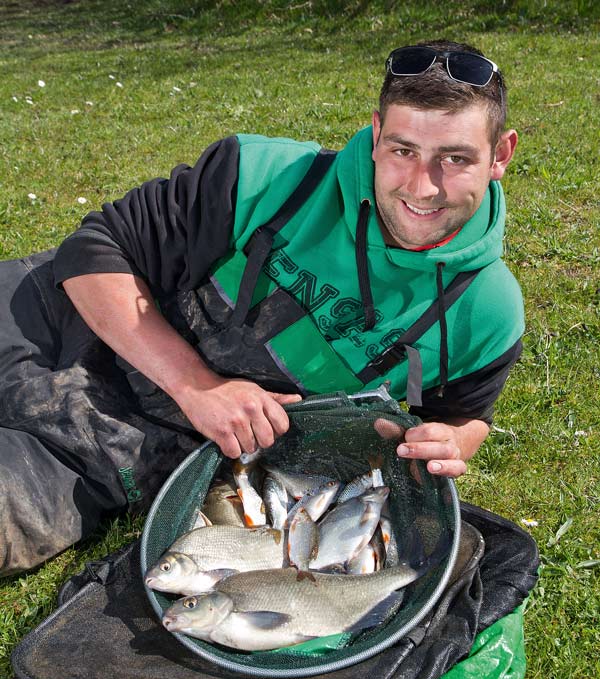
Matt would take catching silvers on the slider over watching a static feeder tip any day!
The action did slow down in the latter part of the session but the fish, when they came, were of a better stamp, plus Matt picked up the best fish of the day – a big skimmer. His 12lb-plus catch was possibly a little less than he had hoped, as the venue’s bream failed to feed, but it’s a weight that, on a day when the fishing was more than a little challenging, could be have been enough to frame. You would also have to ask whether he would he have caught so many smaller silvers on the feeder. Now that’s something to ponder…
Like what you see?
Or buy a single issue
- Log in or register to post comments



